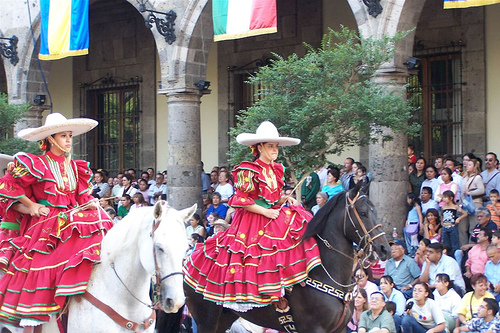
The Saint-Gaudens Double Eagle, 1933, has a nominal value of a 20-dollar gold coin. Although 445,500 specimens of this Saint-Gaudens double eagle were minted, none were ever officially circulated, and all but two were ordered melted down.
However, twenty more are known to have been rescued from melting as they were stolen. Nineteen of these coins were later recovered by the Secret Service, who destroyed nine of them, making this one of the world’s rarest coins.
The two intentionally spared coins are in the U.S. National Numismatic Collection. One is in the hands of a private owner who paid nearly US$8 million for it in 2002, and ten others are held in Fort Knox.
The designer, Saint-Gaudens, took a great interest in the art of the coin. He designed the $20 gold piece, the double eagle coin, for the US Mint in 1905–1907, and it is considered one of the most beautiful American coins ever issued.

The 1907 Roman numeral ultra high relief double eagle, Saint-Gaudens’ design, from the National Numismatic Collection, National Museum of American History
Chosen by Theodore Roosevelt to redesign the coinage of the nation, Saint-Gaudens produced the ultra high-relief $20 gold piece that was adapted into a flattened-down version by the United States Mint.
The ultra high-relief coin required too many strikes to bring up the details and did not stack properly. They were deemed unfit for commerce, and yet, today, they are highly sought-after.
Numismatics
Numismatics is the study and collection of currency, including coins, tokens, paper money, and objects of exchange. The discipline includes the study of money and other payment media used to resolve debts and the exchange of goods.
Many objects have been used in ancient times as circulating currency, such as cowry shells, precious metals, cocoa beans, large stones, and gems.
Today, most transactions take place in the form of payment with either inherent, standardized, or credit value. Numismatic value is the value above the monetary value conferred by law, which is known as the collector value.
Economic and historical studies of money’s use and development are a part of the study of money’s physical embodiment.
Throughout its history, money itself has been made to be a scarce good. Many materials have been used to form money, from naturally rare precious metals and cowry shells to entirely artificial money, called fiat money, such as banknotes.
Modern money is essentially a token. Paper currency is perhaps the most common type of physical money today. However, goods such as gold or silver, retain many of the essential properties of money, such as volatility and limited supply.
However, these goods are not controlled by one single authority.
There are many museums devoted to collecting, exhibiting, and explaining the history of Money and payment systems used to resolve debts and the exchange of goods. Some of the key museums that have significant collections include:
- United Kingdom Museums
- London – Bank of England Museum
- London – British Museum Department of Coins and Medals
- Cambridge – Fitzwilliam Museum
- Oxford – Ashmolean Museum
- Glasgow – Hunterian Museum and Art Gallery
- Birmingham – Barber Institute of Fine Arts, Birmingham University
- Manchester – Manchester Museum
- United States Museums
- Colorado Springs – American Numismatic Association Money Museum
- Washington, D.C. – National Numismatic Collection (NNC), Smithsonian National Museum of American History
- Switzerland Museums
- Zurich – Money Museum
- Japan Museums
- Tokyo – Bank of Japan Money – IMES BOJ Currency Museum
- Greek Museums
- Athens Numismatic Museum of Athens
- China Museums
- Shanghai – Shanghai Museum
- Beijing – National Museum of China
- Russian Museums
- St. Petersburg – Hermitage Museum
Saint-Gaudens Double Eagle, 1933
- Title: Saint-Gaudens Double Eagle, 1933
- Designer: Augustus Saint-Gaudens
- Mass: 33.431 g
- Diameter: 34.1 mm (1.34252 in)
- Thickness: 2.0 mm (0.07874 in)
- Composition: 90% gold, 10% copper
- Minted: 1933
- Museum: New-York Historical Society
Augustus Saint-Gaudens
- Name: Augustus Saint-Gaudens
- Born: 1848 – Dublin, Ireland
- Died: August 3, 1907 (aged 59) – Cornish, New Hampshire
- Nationality: American
Saint Gaudens Double Eagle Gold Coins
A Tour of the New-York Historical Society
- “Tontine Coffee House, N.Y.C.” by Francis Guy
- Saint-Gaudens Double Eagle, 1933
- Pewterers’ Banner 1788
- Benjamin Franklin Bust
- Trumpet Creeper Shade – Tiffany Lamp
- Dogwood Shade with Chased Pod Floor Base – Tiffany Lamp
- Wisteria Table Lamp – Tiffany Lamp
- Magnolia Shade – Tiffany Lamp
- Gourd Shade – Tiffany Lamp
- Nasturtium Shade with Mosaic Turtleback Tile Base – Tiffany Lamp
$20 Liberty and St Gaudens Gold Coins
A Tour of New York Museums
- Metropolitan Museum of Art – MET
- Museum of Modern Art, NYC
- Intrepid, Sea, Air & Space Museum
- Neue Galerie New York
- The Cloisters
- Solomon R. Guggenheim Museum
- American Museum of Natural History
- Museum of the City of New York
- New-York Historical Society
- Frick Collection
- Met Breuer
- Rubin Museum of Art
- Whitney Museum of American Art
- Brooklyn Museum
How to Spot a Fake – 1903 Gold Double Eagle
$20 Saint Gaudens Double Eagle
~~~
“Isn’t it astonishing that all these secrets have been preserved for so many years just so we could discover them!”
– Orville Wright
~~~
Photo Credit: By Joyofmuseums (Own work) [CC BY-SA 4.0 (https://creativecommons.org/licenses/by-sa/4.0)], via Wikimedia Commons 2) By US Mint (coin), National Numismatic Collection (photograph by Jaclyn Nash) [Public domain or Public domain], via Wikimedia Commons
Popular this Week








 Sponsor your Favorite Page
Sponsor your Favorite Page SEARCH Search for: Search Follow UsJoin – The JOM Membership Program
Sponsor a Masterpiece with YOUR NAME CHOICE for $5
Share this:
- Tweet
